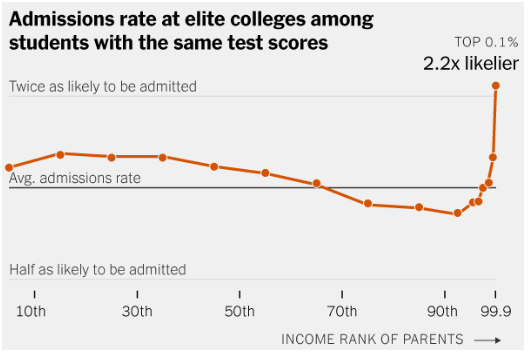Member-only story
Raj Chetty Slaps At The Affluent Again. So Why Does He Work At Harvard?

You may remember Raj Chetty from such studies as “The affluent are dooming our very hopes for the future:”
Much like some guys salivate over Andrew Tate or Jason Aldean or The Rock or some Marvel superhero, there is a class of pseudo-intellectual guys who went to universities a lot less well-known than Harvard to love to quote Raj Chetty. If you are a disaffected urban liberal that wants to talk about inequality without actually doing anything about inequality, he is your gold standard in terms of academics. He has lots of things you can cite and quote about how the rich control society, with nary an action item in site. It’s OK to have that Hamptons house, or that Door County (Wisconsin) property. You know how to discuss the failings of the affluent, even as it remains aspirational for you — or, frankly, is reality.
Chetty and some collaborators have new work out about college admissions:
The core idea of the work is that “rich people are admitted at higher rates.” Yes. I am not sure why we needed to take people’s research time and focus on that. I think we all knew that back to Aunt Becky, if not before. The rich have a thumb on the scale, and by thumb I mean “virtually their entire body weight.” Most universities are designed to excel at 2–3 academic areas and then hopefully sports, and to jack up tuition every year with the excuse of “Your child will never compete in the modern world unless you pay us this sum,” which is ostensibly a form of a bank robbery for the middle class, but eh. The sad part is, that extra money you are paying is not going to superstar professors. It’s going to some 24 year-old woman named Megan who will manage spreadsheets for some…
